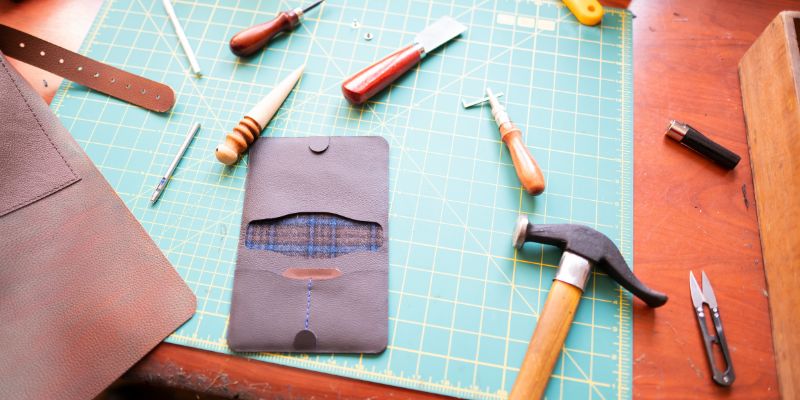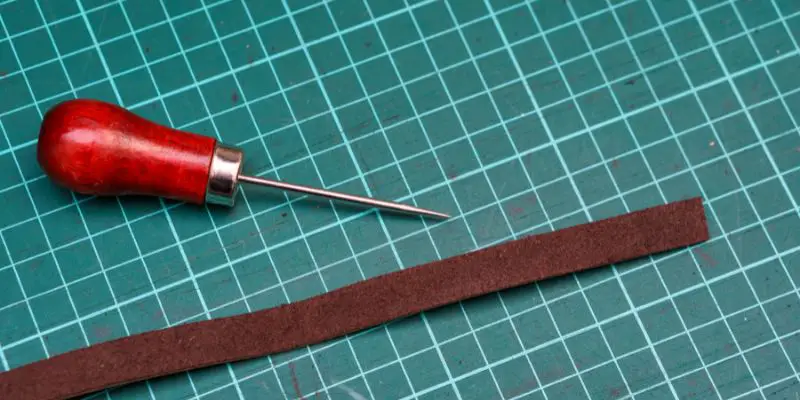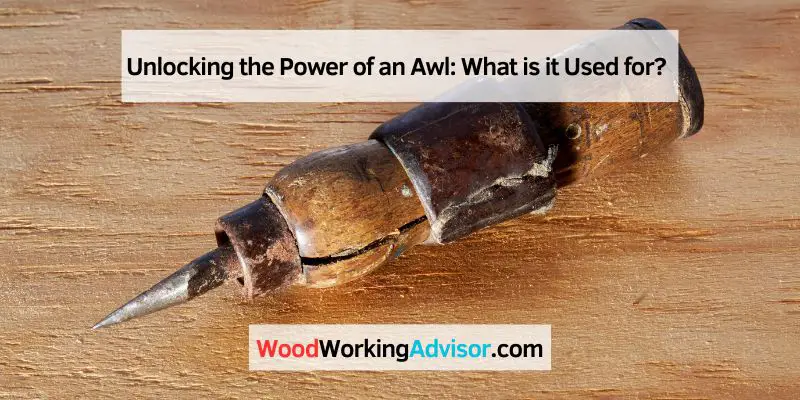An awl is used for making small, precise holes or marking points on materials like wood or leather. An awl is a tool used for creating small holes or marking points on various materials such as wood or leather.
It is commonly used in crafts, sewing, and woodworking for tasks like starting holes for screws or stitching, creating decorative patterns, or making precise markings. The awl has a pointed tip, often made of steel, that allows for easy penetration of materials without causing excessive damage.
Its small size, sharp point, and sturdy construction make it an ideal tool for detailed and accurate work. Whether you are a DIY enthusiast, a seasoned craftsman, or a fashion designer, an awl is a versatile and indispensable tool that can greatly assist you in your projects.
Applications Of An Awl
Awls are versatile hand tools commonly used in various crafts and trades. Their sharp or pointed ends make them ideal for creating holes or indentations in different materials. From leatherworking to woodworking, bookbinding to crafting, the applications of an awl are widespread. Let’s explore the specific uses of an awl in these different fields:
Leatherworking
Awls are indispensable tools in leatherworking due to their ability to pierce and create holes in thick leather. Leather artisans utilize awls to prepare leather for stitching, attach hardware such as buckles or snaps, and create decorative designs like perforations or lacing holes. The pointed end of an awl allows for precise control and helps prevent leather from tearing.
Woodworking
In woodworking, awls serve multiple purposes. They are popularly used to mark or start holes for screws, nails, or dowels. Additionally, woodworkers use awls to create pilot holes, improving the accuracy of drilling. The sharp point of an awl allows woodworkers to make small punctures and create impressions for precise alignment.
Bookbinding
Bookbinders rely on awls to prepare the pages for sewing and binding. By creating evenly spaced holes in the paper or cardboard, awls help ensure the pages are aligned correctly and securely held together. The fine point of an awl allows bookbinders to create clean and neat holes without causing extensive damage to the material.
Crafting
Awls find their place in a wide range of crafting activities. Whether it’s working with fabric, canvas, or any other crafting material, awls can be used to create holes for stitching, embroidery, or attaching decorative elements. Crafters also employ awls to make indentations for embellishments like beads or rhinestones. The versatility of awls makes them an essential tool for crafters of all kinds.

Choosing The Right Awl
When it comes to leatherworking or various DIY projects, an awl is an essential tool that can make all the difference. Choosing the right awl is crucial to ensure accurate and efficient results. With a range of options available, it’s important to understand the different types of awls and the factors to consider when making your selection.
Types Of Awls
Just like any other tool, awls come in different types, each designed for a specific purpose. Here are some of the common types of awls you might come across:
| Awl Type | Description |
|---|---|
| Saddler’s awl | A sharp-pointed awl used primarily for leatherwork and sewing tasks. |
| Bradawl | A woodworking awl with a beveled tip and a slender, tapered shank for piercing wood. |
| Scratch awl | Similar to a bradawl, but with a fine, needle-like point used for marking or starting small holes in various materials. |
| Curved awl | Featuring a curved tip, this awl is specifically designed for sewing leather and fixing shoes. |
Factors To Consider
When choosing the right awl for your project, consider the following factors:
- Material and Strength: Different awls are made from various materials, such as steel or carbon, which determine their durability and strength. Ensure you select an awl that can withstand the intended force and pressure during use.
- Tip Shape: Awls come with different tip shapes, including pointed, rounded, or beveled. The choice of tip shape depends on the task at hand. For intricate work, a pointed awl is ideal, whereas a rounded tip is suitable for general-purpose use.
- Grip and Handle: Consider the comfort and grip of the awl’s handle. Look for a handle with an ergonomic design, providing a secure, non-slip grip to prevent accidents and hand fatigue during prolonged use.
- Size: Awls are available in various sizes, and the right size depends on the scale of your project. Smaller awls are ideal for delicate work, while larger awls provide more leverage for tougher materials.
- Intended Use: Consider the specific task you’ll be performing. If you’re working on leather, a saddler’s awl or a curved awl would be suitable, while a bradawl would be the right choice for woodworking projects.
By considering these factors and understanding the different types of awls available, you can confidently choose the right awl that fulfills your requirements, ensuring precision and efficiency in your projects.

Frequently Asked Questions Of What Is An Awl Used For
What Is The Function Of Awl?
An awl is a tool used for making small holes or starting screws. It has a pointed tip and a handle for better grip and control. It is commonly used in carpentry, leatherworking, and other crafts to mark and create precise holes in materials.
What Did They Use Awl For?
Awls were used as a tool for punching holes in materials like leather or wood. (15 words)
What Does An Awl Do On A Multitool?
An awl on a multitool is a sharp, pointed tool used for making holes or starting screws. It’s handy for tasks like sewing, piercing materials, or marking measurements. The awl adds versatility to the multitool, making it a valuable tool for various projects.
What Does An Awl Tool Look Like?
An awl tool is a pointed tool used for making small holes in materials like leather or wood. It typically has a sharp, slender metal tip attached to a handle, resembling a small screwdriver. Awls come in different sizes and shapes to suit various applications.
Conclusion
An awl is a versatile tool used for various purposes, including leatherworking, bookbinding, and woodworking. Its sharp point and sturdy handle make it ideal for creating holes, starting screws, and marking measurements. By understanding the different techniques and applications of an awl, you can enhance your craftsmanship and work with precision.
So, whether you’re a DIY enthusiast or a professional, incorporating an awl into your toolbox can greatly expand your capabilities. Embrace the power of this simple yet effective tool and explore the endless possibilities it offers.


